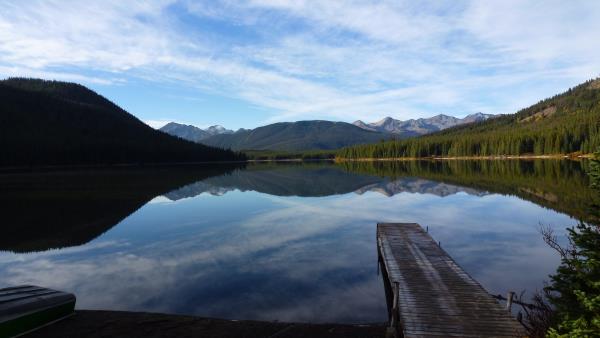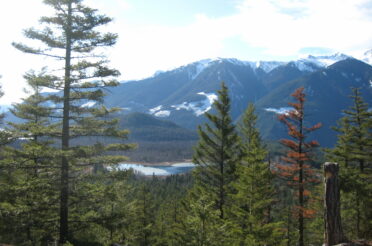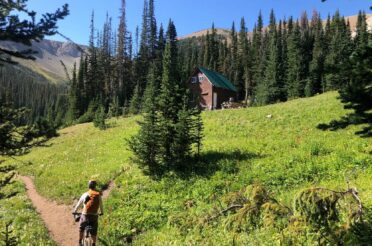Tourism and Its Impact on the Environment

Summary:
This blog story is the first in our new conservation series. This first story discusses the current use of nature for tourism and asks the question, what is being done to conserve this area so many people are benefiting from?
British Columbia is known internationally for its wilderness, wildlife and the Western lifestyle. This makes it a popular tourist attraction, but is enough being done to ensure wilderness tourism is sustainable?
Destination BC is provincially funded and supports the tourism industry of British Columbia, Canada. According to their website, they want to improve the experience of visitors to the province, support tourism business and BC communities and enhance BC’s reputation as a tourism destination worldwide. They want to increase tourism and revenue for the industry, which will benefit tourism operators and the province as a whole (Destination BC, 2021).
In 2014, Destination BC released a video showing the world the best of BC called The Wild Within. This 3 minute video is composed of scenes of pristine mountains, clean rivers, ancient rainforests, abundant wildlife and the pure Pacific Ocean. The video features only a few people, riding horses, mountain biking, hiking in the rainforests and mountains, canoeing or boating, clearly emphasizing the seclusion and space of BC’s pure nature. The city is only featured twice in the video. The narrator, accompanied by dramatic music, talks of endless wilderness, ancient forests and feeling alive, the emphasis is on pure nature. Is responsibility being taken to conserve the natural environment that is providing the opportunity for tourism equal the effort that is put into promoting it?
The video clearly showcases the best of BC, its pure nature. If the YouTube comments are anything to go by, it has had a big impact on viewers who marvel at the scenes and express a desire to visit or return. This video looks great for tourists. It looks great for tourism businesses. And it looks great for the economy.
But what about the pure nature? Is the pure nature promoted in this video as abundant as it appears? What percentage of BC has this pure nature? How is the government of BC managing the resources to maintain the image that is being promoted?
All ecosystems have a carrying capacity – the number of animals of a particular species a habitat can sustain before the animals cause a negative impact on the environment. Carrying capacities are true of humans too. Each ecosystem can support a specific number of humans participating in a certain activity, such as horseback riding, heliskiing, hiking, snowmobiling, driving motor vehicles, swimming, canoeing, power boating etc, before the quality of experience the people came for is lost and humans start to have a negative effect on the ecosystem. Having a carrying capacity clearly stated in park use plans and enforced by rangers, tourism operators and the public can decrease the loss of experience and stress on the ecosystem.
Destination BC published a brochure for tourism operators on sustainable tourism (Destination BC, 2015). Some guide outfitters, ecotourism operators and conservation groups are playing their part. But there is a lot more that could and should be done. Ecotourism, particularly when tourists travel with licensed guides instead of unmanaged independent use, is one way impacts can be reduced (The World Counts, 2021).
But tourism isn’t the only stakeholder impacting the wilderness. Other resource users are bigger revenue earners for the province and as such tend to have a louder voice when it comes to management and conservation issues (Caddell, 2018). This means that tourism has no legislative capacity to get involved in decision making on land management (Caddell, 2018).
Dispersion of tourists is a way to meet carrying capacities of the environment. This can be done by assessing how much to market specific areas based on their carrying capacities and the type of tourism they are suitable for. This would mean areas better suited for skiing would market skiing and so on. The amount of marketing done for an area can be directly proportional to the carrying capacity and current visitor numbers.
The Government of British Columbia (2021) states that 90% of BC is provincial public land, 94% of which is covered by existing land use plans. Ensuring land management plans are up to date and appropriate for the current state of the land they cover will also benefit the natural habitat.
Tourism operators also need to play their part for conservation of the natural lands. Wildlife population counts, adherence to regulations, enforcing carrying capacities of their guests and participating in high-level land planning are all ways businesses can do their part for conservation of the environment.
British Columbia highly values its wilderness, one of the few places pure nature can still be found. But the people who are benefiting from an environment need to be actively conserving it. This is why it is vital for all people of BC including government, tourism operators, First Nations, resource users and BC residents to play their part in conservation of the environment.
Sources:
Caddell, N. (2018) How B.C. manages the complications of combining tourism and the environment. Available at: https://www.bcbusiness.ca/The-BCBusiness-2018-Tourism-Status-Report-Environmental-stewardship. (Accessed: January 7th 2021).
Destination BC (2021) About Destination BC. Available at: https://www.destinationbc.ca/who-we-are/ (Accessed January 7th 2021).
Destination BC (2015) Sustainable Tourism. Available at:
https://www.destinationbc.ca/content/uploads/2018/08/Susantainable-Tourrism-TBE-December-2015.pdf. (Accessed January 7th 2021).
Government of British Columbia (2021) Land use planning for provincial public land. Available at:
https://www2.gov.bc.ca/gov/content/industry/crown-land-water/land-use-planning. (Accessed: January 7th 2021).
The World Counts (2021) 45 Arrivals Every Second. Available at:
https://www.theworldcounts.com/challenges/consumption/transport-and-tourism/negative-environmental-impacts-of-tourism/story. (Accessed: January 7th 2021).
Charlie



